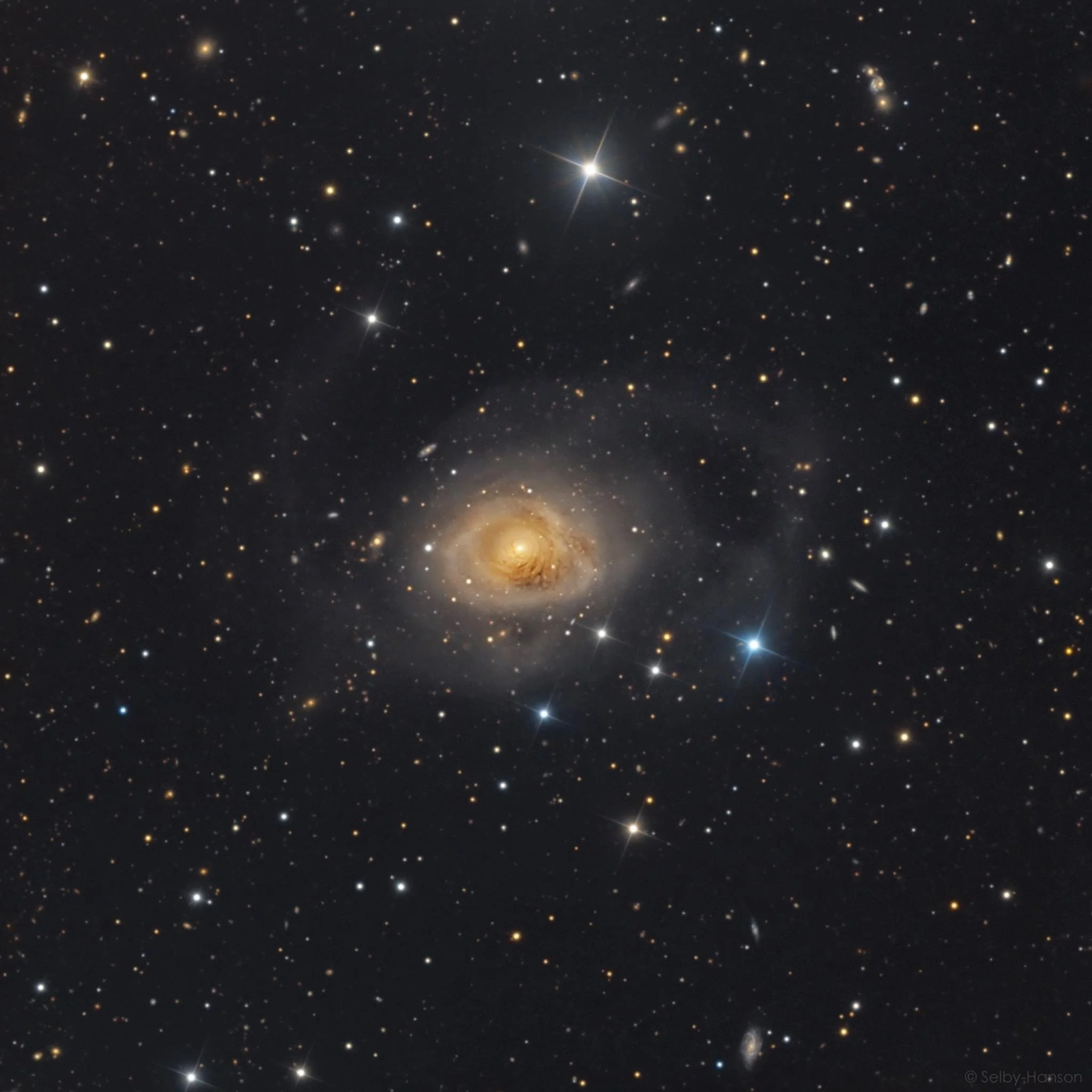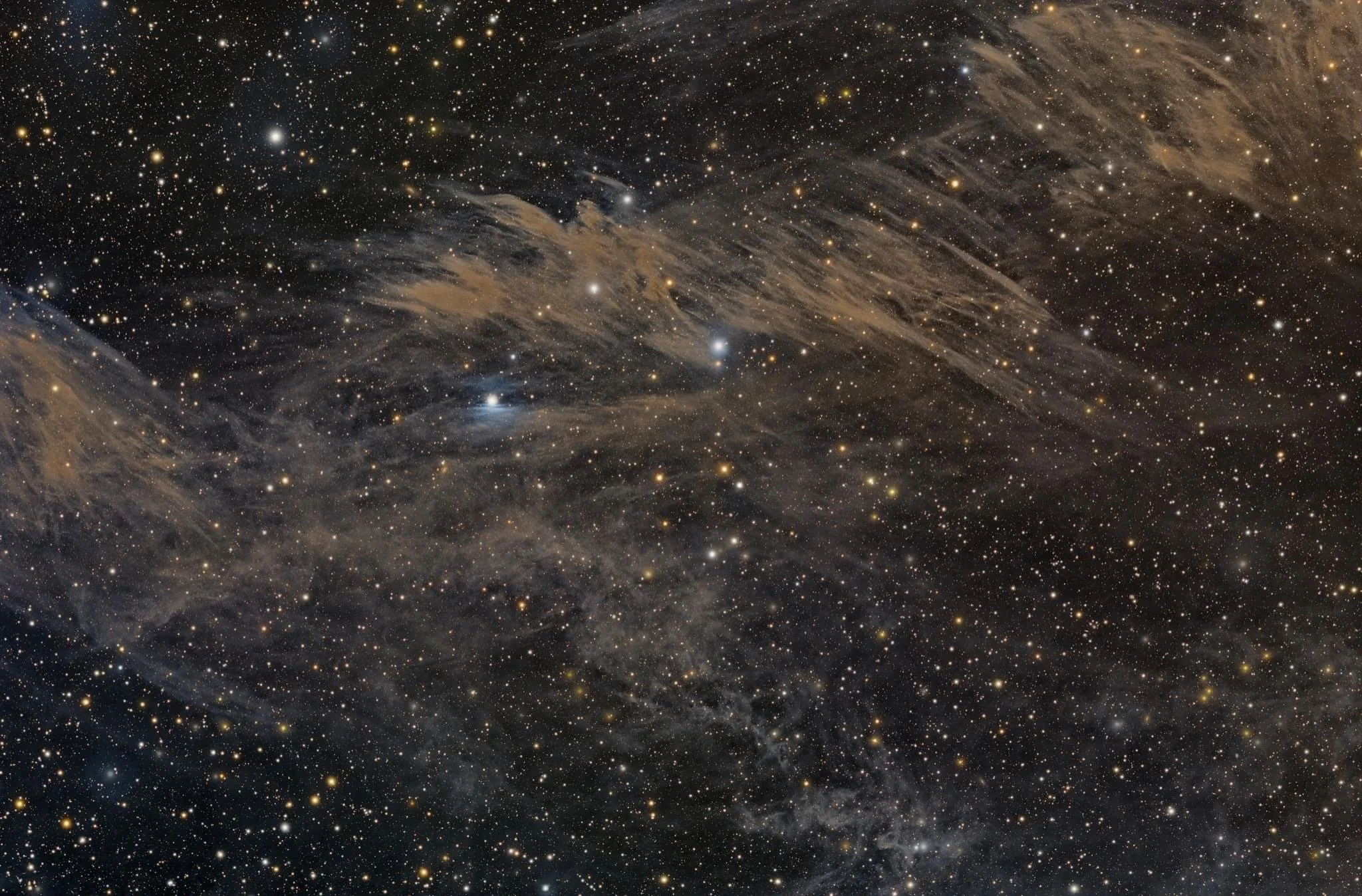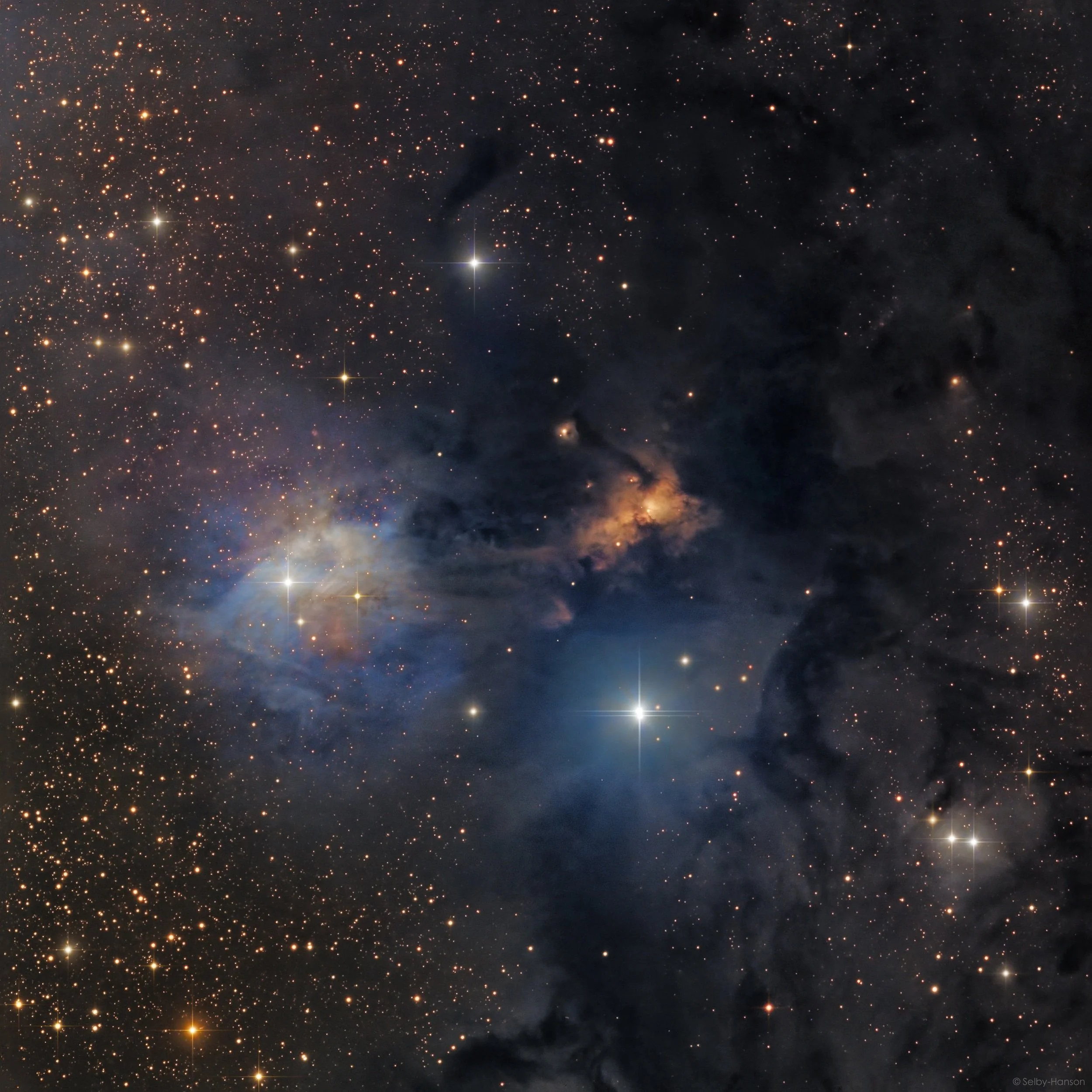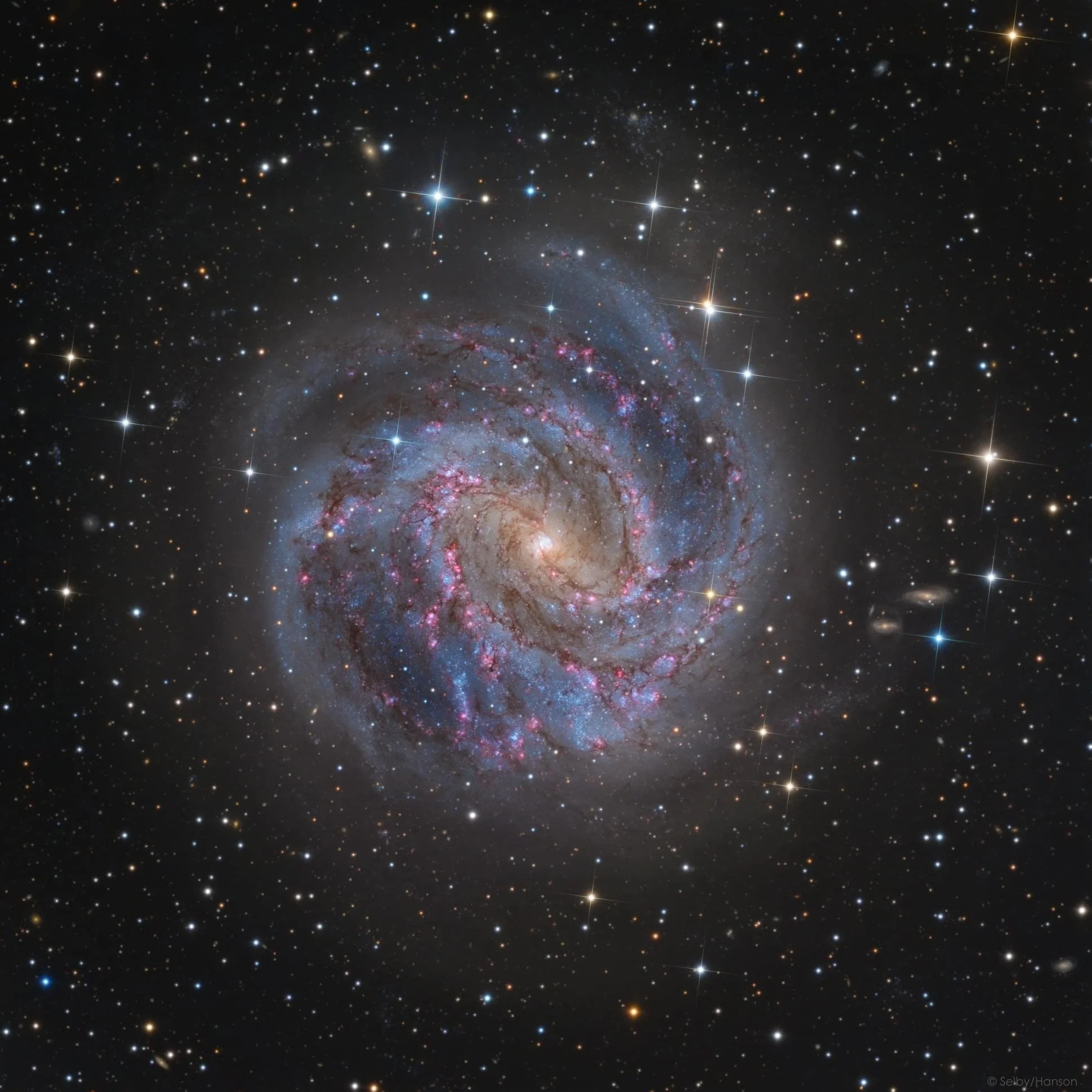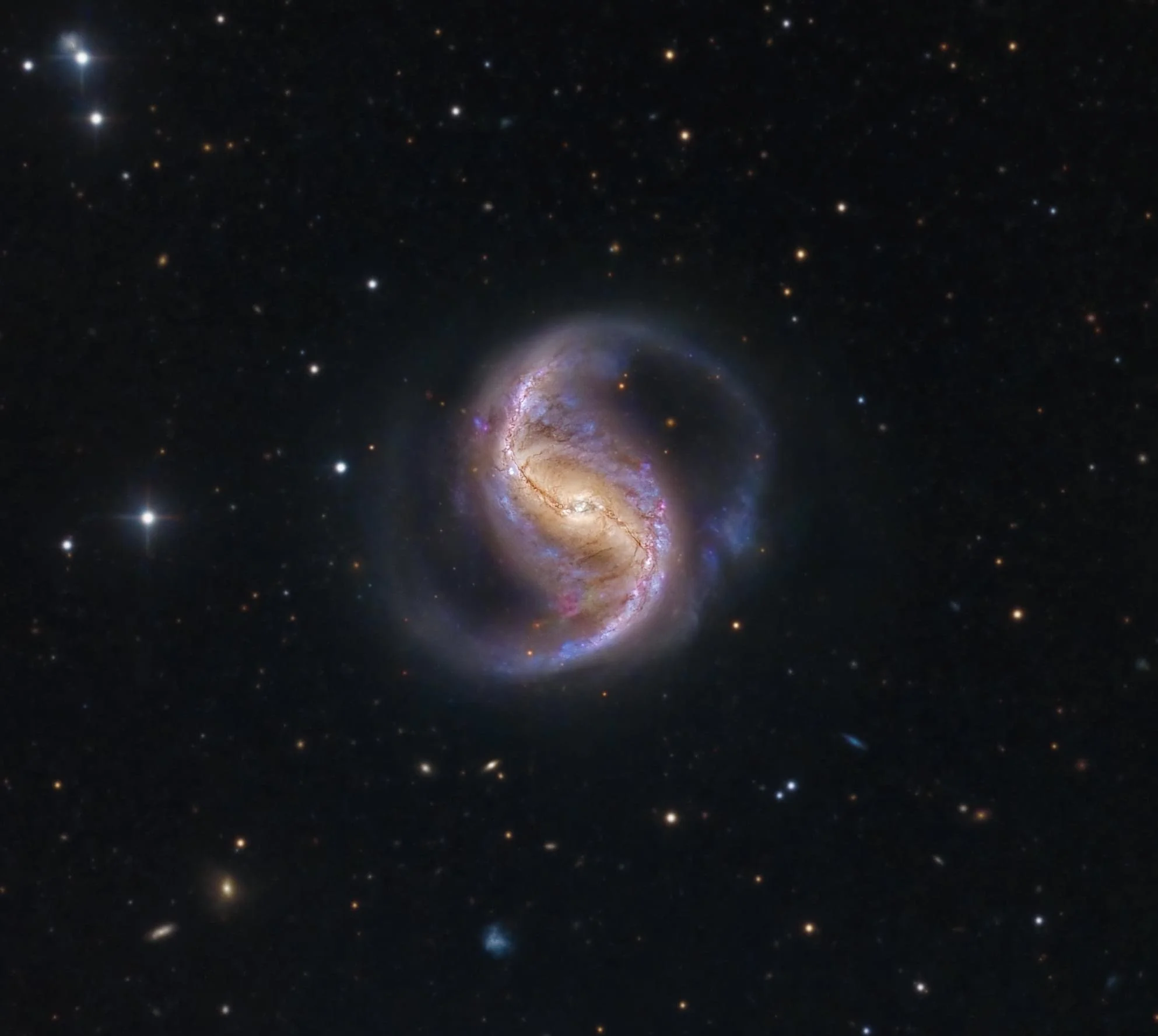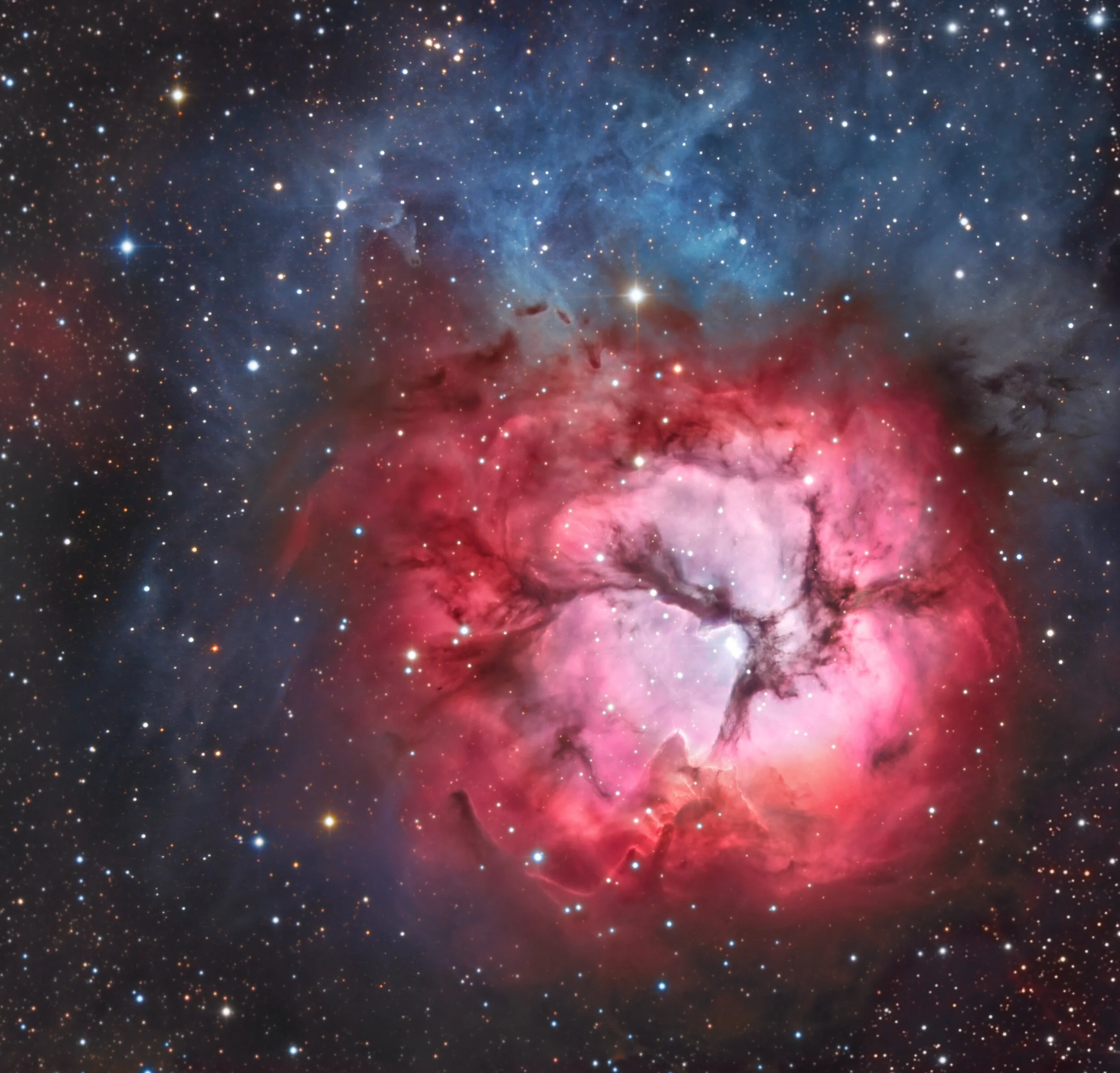
AAPOD2 Image Archives
NGC 2626
Image Description and Details : It has components of reflection nebula, emission nebula and dark (absorption) nebula which makes it both challenging and cool. It is located in Vela approximately 4200 light years from Earth.
The reflection nebula is primarily illuminated by a B1 star (CD-40 4432) and is ionized by the O8 quadruple star system HD 73882.
Imaged in LRGB on the Planewave CDK 700 at Observatorio El Sauce, Chile.
Image Data Acquired and preprocessed by: Mike Selby at throughlightandtime.com
Processed using Pixinsight and Photoshop.
Copyright: Mike Selby and Gowri Visweswara
Ngc1808
NGC 1808 is a barred spiral galaxy located 40 million light years from Earth in the constellation of Columba.
While most spiral galaxies are flat disks this one has spumes of dust and gas on its outer spiral arms. The unusual shape may have been caused by a proximate encounter with another galaxy (NGC 1792). This is supported by the amount of gas moving towards the nucleus of NGC 1808 which has triggered a very high level of new star formation. The galaxy is classified as a starburst galaxy, but the heavy amount of gas and dust tends to obscure the starburst regions in ground based images. Of interest in this deep image is the resolution of the faint outer arms and star streams.
Imaged in LRGB on our CDK 1000 at Observatorio El Sauce, Obstech, Chile.
Deconvolved with RC Astro Blurxterminator Beta version.
Image Processing: Mike Selby and Mark Hanson
NGC 7377
NGC 7377 is located 100 million light years away in Aquarius. It is relatively small in the apparent field of view and has been very rarely imaged. It has been variously classified as lenticular and spiral. As seen in this image there is a spiral structure evident and faint out stretched arms. It is more probable that this is a spiral transitioning to a lenticular galaxy. The spiral structure has a heavy dust content and is quite dense towards the central portion of the galaxy. The overall shape of the galaxy indicates possible past interaction with another galaxy. Imaged in LRGB on our Planewave CDK 1000 at Observatorio El Sauce, Chile.
Image Processing: Mike Selby and Mark Hanson
Inside The South Celestial Serpent
The South Celestial Serpent is a large integrated flux nebula (IFN). IFN are composed of diffuse dust particles, hydrogen and carbon monoxide and other elements. Unlike reflection nebula’s which are lit by proximate stars, IFN are illuminated by the glow of the Milky Way Galaxy and are much fainter than most reflection nebulae. IFN were only identified quite recently in great part due to improvements in the sensitivity of imaging sensors. They are very prominent in the direction of both the north and south celestial poles. The large IFN nebula close to the south celestial pole is MW9 and is commonly termed the South Celestial Serpent.
Imaged in RGB on our RH 350 at Observatorio El Sauce, Chile.
Image Processing: Mike Selby and Mark Hanson
VDB 123 and Serpens Reflection Nebula
Image Description and Details : VDB 123 is a reflection nebula in Serpens embedded in the Serpens Dark Cloud. It is illuminated by HD 170634 a magnitude 9.75 blue star.
Standing out in contrast to VDB 123 is a bright region of orange nebulosity, the Serpens reflection nebula.
Imaged in LRGB on our PlaneWave CDK 1000 at Observatorio El Sauce, Chile.
Image Processing: Mike Selby and Mark Hanson
Integration Time: L 16 hours RGB 5.5 hours each.
Copyright: Mike Selby/Mark Hanson
M83
One of the highlights of the Southern sky, M83 is often referred to as the Southern Pinwheel. It is a colorful barred spiral starburst galaxy located only 15 million light years away in Hydra.
M83 has an unusual double nucleus and houses a super massive black hole at its center apparently surrounded by an asymmetric disc of stars. It has also been the home of at least six observed supernovae and nearly 300 supernovae remnants have been identified.
Imaged in LRGB and H alpha on our PlaneWave CDK 1000 at Observatorio El Sauce, Chile.
Copyright: Mike Selby and Mark Hanson
ngc 986
NGC 986 is a barred spiral galaxy in the constellation of Fornax, located about 56 million light-years away. It is a small target and is not imaged often. The galaxy contains two large, extended and slightly warped arms that begin at each end of the central bar.
Young blue stars are spread through the arms and the core of the galaxy glows with star formation surrounded by numerous dust lanes.
Imaged in LRGB at El Sauce, Obstech, Chile on our CDK 1000
Image Processing: Mike Selby
M20
Close up of M20 the Trifid Nebula. Located 9000 light years away in Sagittarius Trifid is a star forming nebula. It is a very popular subject for astrophotographers. This image was taken with our RiDK 700 in LRGB Hydrogen Alpha and Oxygen III to provide a detailed close up of the Nebula and surrounding gas clouds.
Imaged at El Sauce, Obstech, Chile
Image Processing: Mike Selby
System Control Software: Voyager by Leo Orazi.
Copyright: Mike Selby
NGC 2835
Image Description and Details :
NGC 2835 is an intermediate barred spiral galaxy with a massive black hole at its center. It is located in the constellation Hydra, at a distance of approximately 35 to 40 million light years from Earth, and is about 65,000 light years across. Seen face on with its tightly woven arms it has a sea shell like appearance.Imaged in LRGB on our Officina Stellare RiDK 700 at Obstech,Chile.OTA RiDK 700 FL 4900 mm, Mount OS Polar Fork, Camera PL 16803, Filters ChromaLuminance 15 hours 900sRGB 6 hours per channel 900s bin 2
Copyright: Mike Selby




